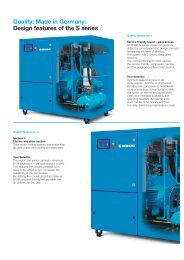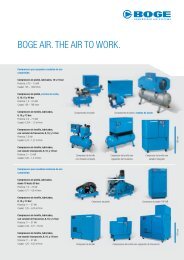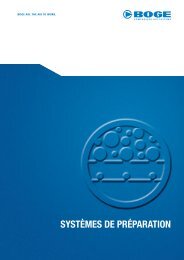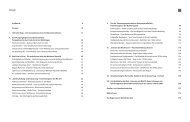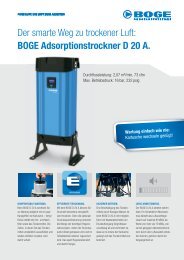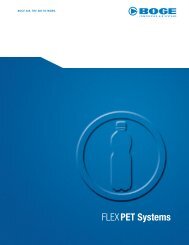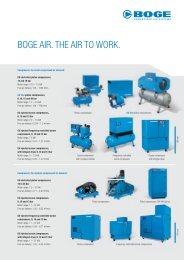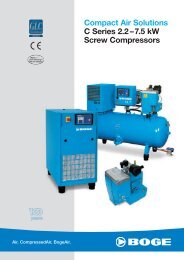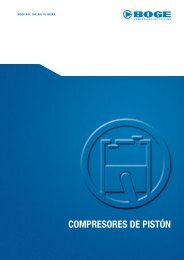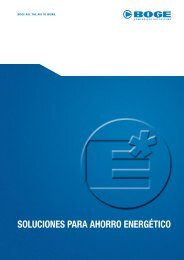Technical Paper Session Name: Energy ... - Boge Kompressoren
Technical Paper Session Name: Energy ... - Boge Kompressoren
Technical Paper Session Name: Energy ... - Boge Kompressoren
You also want an ePaper? Increase the reach of your titles
YUMPU automatically turns print PDFs into web optimized ePapers that Google loves.
International Rotating Equipment Conference 2008, Düsseldorf<br />
m³ of 1 Cent/m³. This of course only includes the costs for the compressor, leaving out the costs<br />
for all other components of the compressor station.<br />
This calculation example clearly shows that the real money saving potential does not lie in<br />
buying a cheap compressor but in buying an energy efficient compressor. In this example the<br />
result of even only 2 % improved energy efficiency exceeds the saving potential of a 10 %<br />
reduction in purchasing price. Unfortunately the total Life Cycle Costs (LCC) are not always<br />
used as the relevant basis for purchasing decisions.<br />
Choosing energy efficient compressors is something that should be done every time a new<br />
compressed air station is designed or when a compressor is exchanged. But there are also<br />
other measures for existing compressor stations that can reduce energy costs.<br />
Effect of leakages<br />
The study by Radgen/Blaustein shows an average saving potential of 16 % for leakage<br />
reduction. The operator of any compressor station should therefore keep a careful eye on<br />
leakages in his compressed air system. The following figure illustrates the cost of leakages.<br />
Leakage Leakage Losses<br />
size volume at 8 bar ü <strong>Energy</strong> Money<br />
[ mm ] Size [ l/min ] [kW] [ €/J ]<br />
1 75 0,6 315,-<br />
1,5 150 1,3 683,-<br />
2 260 2,0 1051,-<br />
3 600 4,4 2312,-<br />
4 1100 8,8 4625,-<br />
5 1700 13,2 6938,-<br />
Fig. 3: Costs of leakages [1]<br />
Every compressed air system has leakages. Some installations have an excellent leakage rate<br />
of only 5 %, others have leakage rates of 50 % or even higher. The leakages seldom occur in<br />
the main piping, but in flanges, connections, couplings, maintenance units or in the compressed<br />
air tool itself.<br />
In our example the overall average leakage saving potential of 16 % results in an energy saving<br />
potential of 13,832 €/a x 16 % = 2,213 €/a.<br />
Additionally, reducing leakage volume also results in reduced operating hours of the<br />
compressor: 6,000 h/a x 16 % = 960 h/a. This will reduce the maintenance costs. (6,000 h/a is<br />
used because reducing the load run time will also affect the total idle run time.)<br />
Finding air leakages is not a problem, if the right tools are used, for<br />
example an ultra sonic sensor that detects emissions from a<br />
leakage (see Fig.4). This sensor should be used at least twice a<br />
year to audit a system and leakages should then immediately be<br />
repaired. To purchase an ultra sonic leak detector is a small<br />
investment, thereafter the only additional overhead is your labour<br />
cost. The annual saving potential definitely outweighs the<br />
Money values for:<br />
Electricity costs 0.06 €/kWh<br />
Leakage time 8,760 h/a<br />
Fig. 4: Leakage detector [3]



